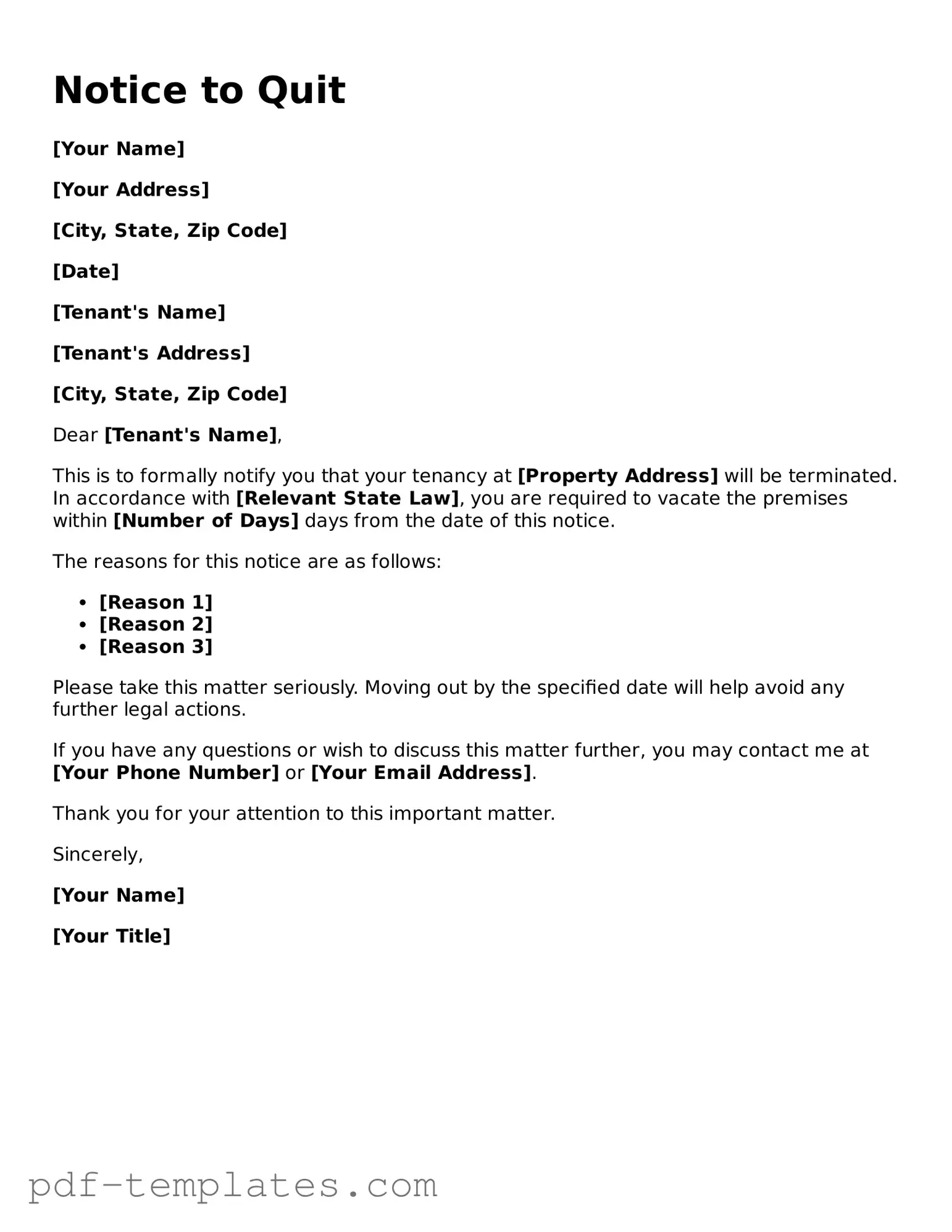The Notice of Termination is similar to the Notice to Quit form. Both documents serve as formal notifications to tenants regarding the end of their tenancy. A Notice of Termination typically outlines the reasons for ending the lease and provides a specific date by which the tenant must vacate the premises. This document is often used in residential leases to ensure that both parties understand the terms of the lease termination.
The Eviction Notice is another document that shares similarities with the Notice to Quit. An Eviction Notice is issued when a landlord seeks to remove a tenant from a property due to lease violations or non-payment of rent. Like the Notice to Quit, it informs the tenant of their obligation to leave the property. However, the Eviction Notice often includes details about the legal process that may follow if the tenant does not comply.
A Demand for Possession is also comparable to the Notice to Quit. This document is usually issued by a landlord when a tenant has failed to pay rent or violated lease terms. It demands that the tenant vacate the property. The Demand for Possession often serves as a precursor to legal action, making it clear that the landlord intends to pursue eviction if the tenant does not respond.
The Lease Termination Letter can be seen as another related document. This letter communicates the landlord's decision to terminate the lease agreement. It provides the tenant with information about the end date of their tenancy and any necessary steps they must take. Like the Notice to Quit, it ensures that both parties are aware of the lease's conclusion.
The Notice of Non-Renewal is similar in purpose to the Notice to Quit. This document is used to inform tenants that their lease will not be renewed once it expires. It gives tenants the opportunity to find alternative housing. Both documents aim to provide clear communication about the future of the tenancy.
The Notice of Rent Increase can also be likened to the Notice to Quit. While it does not terminate a lease, it informs tenants of an upcoming change in rental terms. This notice allows tenants to decide whether they want to continue their tenancy under the new terms or move out. Both documents require clear communication from the landlord to the tenant.
The Move-Out Notice is another document that resembles the Notice to Quit. It is used by tenants to formally notify landlords of their intention to vacate the property. This notice typically includes the move-out date and any required details about the condition of the property. It ensures that both parties are on the same page regarding the end of the tenancy.
The Notice of Default can be compared to the Notice to Quit as well. This document is issued when a tenant has failed to meet the terms of their lease, such as not paying rent. It serves as a warning that the landlord may take further action if the issue is not resolved. Both documents emphasize the importance of fulfilling lease obligations.
In a similar vein, those in the beauty industry must recognize the significance of their professional documents, particularly when it comes to maintaining compliance with state regulations. For instance, renewing a cosmetology license in California is crucial, and professionals should be mindful of the All California Forms to ensure they have the necessary paperwork in order to continue their practice legally and avoid any penalties associated with expired licenses.
Finally, the Conditional Quit Notice is similar to the Notice to Quit. This document is issued when a tenant has committed a specific violation of the lease agreement. It gives the tenant a chance to correct the violation or face eviction. Both notices aim to address issues within the tenancy while providing the tenant with an opportunity to comply.
